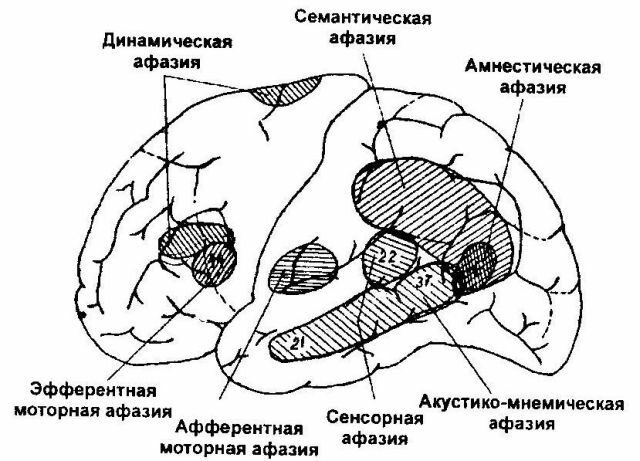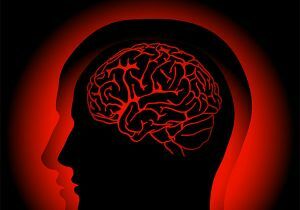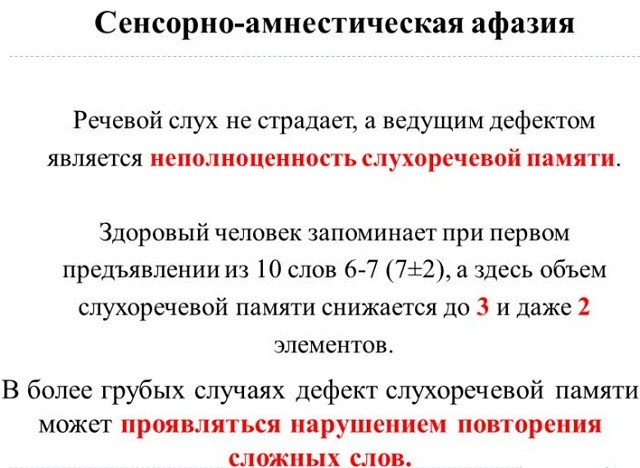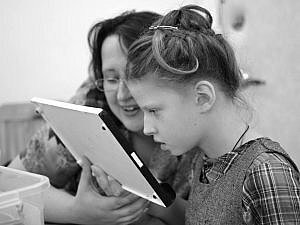 Speech is one of the forms of higher nervous activity of a person, through which people communicate with each other. Disorders of this brain function occur in various situations associated with severe neurological diseases and injuries.
Speech is one of the forms of higher nervous activity of a person, through which people communicate with each other. Disorders of this brain function occur in various situations associated with severe neurological diseases and injuries.
In the event that a person has had a partial or complete loss of an already formed speech, talk about a symptom such as aphasia.
The study of this neurological disorder was started already in the century before last, but there are still a number of questions and topics for discussion of scientists.
Depending on the lesion of this or that zone of the cerebral cortex, speech disorders can manifest themselves in different ways, that is why several main types of aphasias are distinguished. One of the relatively easy speech disorders is amnestic aphasia. What is the specificity of this neurological symptom?
General information
Amnestic aphasia can be considered a speech disorder with minimal loss. In this case, the patient is deprived of the ability to quickly select the right word in the conversation, forgets the names of the objects, although it can describe them, which makes it difficult to express thoughts and communicate with others.
At the same time, a person does not have a violation of intelligence and articulation, and the auditory data is preserved. This condition is a symptom of the lesion of the temporo-parieto-occipital region of the left hemisphere. All patients with this disorder experience oppression of the functioning of this area of the cerebral cortex and a decrease in the volume of auditory and / or visual memory.
Some specialists use the term amnestic aphasia to combine two types of speech disorders. These include:
- acoustical-associated aphasia is observed when the middle temporal gyrus is affected and the pathological effect on the zone of the auditory analyzer is based on a reduction in the volume of the auditory memory;
- opticonesthetic aphasia - occurs when the neighboring parts of the temporal and occipital lobes in the left hemisphere are affected, unlike the previous form, the patient does not have an auditory perception of the nouns, but the visual perception of objects is affected.

Where does the
problem come from? The main causes of aphasia are diseases or traumatic injuries that lead to a disruption of the nerve impulse to the visual analyzer. The problem may be in the centers of the cerebral cortex or conducting paths.
Depending on the cause, speech disorders can have a gradual development or rapid course. In the first case, the following conditions prevail in the etiology: 
- tumor formation in the corresponding brain region;
- infectious processes( encephalitis, meningitis);
- inflammatory diseases( brain abscess);
- long-term pathological conditions leading to acquired vascular or degenerative changes( Alzheimer's, Pick's disease).
Rapid development of amnestic aphasia occurs in the following cases:
- acute disorders of cerebral circulation( strokes, vascular thrombosis);
- head trauma with severe confusion in brain damage;
- infarcts;
- some mental states.
Predisposing factors for the development of aphasia are:
- elderly and senile;
- hereditary predisposition;
- common diseases( arteriosclerosis of blood vessels, IHD, heart diseases, hypertension, epilepsy, frequent migraine attacks).
How the
is manifested The amnestic form of aphasia can be difficult to recognize and diagnose during the initial examination of the patient. Such people do not have a disruption of dialogue speech, including spontaneous speech, they construct phrases correctly, without grammatical errors, however verbs are predominant in their conversation and nouns are practically absent.

The following speech features are also characteristic:
- multiple repetitions of the same words in spontaneous speech;
- difficult search for the desired name of an item or event;
- word replacement with description of its appearance and functions;
- no motor disorders( no difficulties with pronunciation of sounds), correct articulation;
- preservation of reading and writing skills( correctly calls the right word if it sees its graphic image);
- is a phenomenon of alienation of the word's semantic load in its correct repetition.
Most often, amnestic aphasia is a symptom of some formidable disease or condition, so other neurologic manifestations may be present in the clinic, for example, concomitant hemiparesis.
Severity of clinical signs can have different severity depending on such factors as:
- localization of the lesion and its size;
- cause of the disease( for example, stroke is characterized by more severe speech disorders than thrombosis or arteriosclerosis of the vessels);
- the age of the patient( young people have more opportunities for early and complete recovery of speech);
- presence of concomitant severe diseases;
- features of the compensatory capabilities of the body.
Amnestic aphasia in its pure form occurs less frequently in mixed forms, for example, a combination of sensory and motor aphasias against the background of forgetfulness of words in brain tumors or vascular diseases.
Principles of treatment
 Therapy of such conditions is carried out after examination and examination of the patient using methods such as MRI or CT, angiography, ultrasound of cerebral vessels, etc.
Therapy of such conditions is carried out after examination and examination of the patient using methods such as MRI or CT, angiography, ultrasound of cerebral vessels, etc.
The choice of method of treatment depends on the type of impulse conduction to the analyzer. If a direct cause of speech disorder is identified, its elimination by an operative route( for tumors, abscesses of the brain) or conservative methods is carried out. Strokes require immediate and intensive intervention. Inflammatory and infectious processes are subject to antibacterial, hormonal and other types of therapy according to the situation.
Recovery of speech functions usually involves the participation of a speech therapist, neurologist and psychiatrist, this can last for years. For each patient, an individual comprehensive program is selected, consisting of medical treatment, sessions with a speech therapist, physiotherapy exercises and other activities.
Specialists can not always give guarantees of complete cure, especially in elderly patients with severe concomitant diseases. Seldom there are cases of spontaneous restoration of speech, for example, in young people with an initial good health reserve and high compensatory possibilities.
Stages of correction
Training and correction play a big role in the rehabilitation therapy of patients with different types of aphasia, in particular with the amnestic form. They are aimed at a gradual increase in the volume of auditory and visual memory of the patient. Usually the work is carried out in several stages:
- Lessons on the subject classification of words - studying pictures with captions under the images of objects, finding out their
 functional purposes, comparing their body parts with those drawn on the pictures.
functional purposes, comparing their body parts with those drawn on the pictures. - Classes for the recovery of situational conditioned speech - performance of verbal instructions, filling out a questionnaire, finding items in the room according to instructions, conducting a conversation on a specific situation.
- Expanding the boundaries of auditory and visual memory - the solution of crosswords, riddles, making stories on set topics on a series of pictures and recording them, retelling the heard or read work, memorizing the addresses and phones of fictional characters.
The prognosis is determined individually for each particular patient. In many cases it is possible to achieve successful results of treatment, especially in case of early onset and observance of the necessary duration of corrective therapy.



